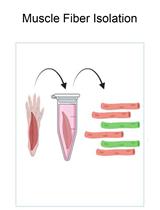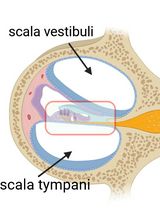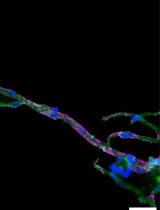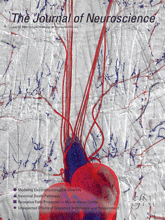- Submit a Protocol
- Receive Our Alerts
- Log in
- /
- Sign up
- My Bio Page
- Edit My Profile
- Change Password
- Log Out
- EN
- EN - English
- CN - 中文
- Protocols
- Articles and Issues
- For Authors
- About
- Become a Reviewer
- EN - English
- CN - 中文
- Home
- Protocols
- Articles and Issues
- For Authors
- About
- Become a Reviewer
Stereotaxic Injection of LPS into Mouse Substantia Nigra
Published: Vol 2, Iss 8, Apr 20, 2012 DOI: 10.21769/BioProtoc.153 Views: 21827

Protocol Collections
Comprehensive collections of detailed, peer-reviewed protocols focusing on specific topics
Related protocols

In vivo Electroporation of Skeletal Muscle Fibers in Mice
Steven J. Foltz [...] Hyojung J. Choo
Jul 5, 2023 1076 Views

Cochlear Organ Dissection, Immunostaining, and Confocal Imaging in Mice
Chenyu Chen [...] Dongdong Ren
Jan 20, 2025 2691 Views

Isolation and Imaging of Microvessels From Brain Tissue
Josephine K. Buff [...] Sophia M. Shi
Aug 5, 2025 1579 Views
Abstract
Stereotaxic injection is an attractive approach for studying genetic, cellular and circuit functions in the brain. Injection of anatomical tracers, site-targeted lesions and gene delivery by recombinant adeno-associated viruses and lentiviruses in mice are powerful tools to study nervous system development and disease mechanisms. Stereotaxic injection of LPS or 6-hydroxydopamine has been used to establish animal models of Parkinson’s disease, the most common neurodegenerative movement disorder. Importantly, this protocol allows the manipulation of gene expression in the targeted rodent brain regions and even targeted cell types or a subpopulation of cells in the injected region at any postnatal developmental stage up to adulthood.
Materials and Reagents
- Eight-week-old male C57 mice or a variety of transgenic/knockout mice, body weight 20-25 g
- Nembutal
- Buprenorphine
- LPS (Escherichia coli 0111: B4) (Sigma-Aldrich)
- Sterile normal saline (0.9%) or other vehicle for your reagents
- Ocular lubricant (Puralube)
- 70% ethanol
- 4% paraformaldehyde
- Betadine
- Phosphate buffered saline (PBS)
- LPS stock solution (see Recipes)
Equipment
- Motorized microinjection pump
- Small-animal stereotaxic apparatus (mouse stereotaxic apparatus)
- Microinjection apparatus
- Dental drill and #1 burrs
- Microknife
- Scalpel (#10)
- Tissue forceps
- Gauze
- Autoclips/suture materials
- Stereotaxic frame
Procedure
- Animal anesthesia
Nembutal 50 mg/kg intraperitoneal injection.
- Analgesic
Buprenorphine, 0.1 mg/kg subcutaneous injection given at the time of surgery.
- Animal preparation
- Clip hair from the top of the head.
- Decontaminate skin with betadine followed by 70% ethanol.
- Administer the analgesic.
- Apply an ocular lubricant to prevent drying of the eyes.
- Clip hair from the top of the head.
- The coordinates used for the injection
- 3.0 mm posterior to the bregma.
- 1.3 mm lateral to the midline.
- 4.7 mm ventral to the surface of the skull.
Note: Differences in mouse age and body weight might require an adjustment to the coordinates for the injection.
- 3.0 mm posterior to the bregma.
- Surgical procedure
- Stabilize the head of the mouse in the stereotaxic frame by using the ear bars. It is critical for the head to be positioned correctly by the ear bars. This can be verified by moving the nose right to left and the eye on the opposite side will squint.
Note: There is no need to puncture eardrums for proper positioning.
- Make a 5 mm incision in the midline of the scalp.
- To prevent bleeding, gently scrape away the periosteal connective tissue that adheres to the bone with the blunt edge of the scalpel handle.
- The cranial sutures, bregma and lambda will be identified and a hole will be drilled with a small dental drill in the parietal skull plate (coordinates to be determined by stereotaxic atlas of rat brain).
- The hole will penetrate the full skull but not the dura mater. The dura is a very tough membrane but can easily be sliced with a sharp hypodermic needle.
- A pre-loaded 30 g a microinjection syringe attached to the microinjection apparatus is slowly inserted into the brain to predetermined depth through the opening in the skull. The injection will be conducted over a period of 2 min and controlled by a motorized microinjection pump.
- Repeat step 4 to step 6 to injection 2 µl of sterile normal saline (0.9%) into the opposite side of the brain.
- After the injection, the needle will be kept in place for 2 min.
- Remove the needle slowly out of the brain.
- Close the skin incision with autoclips or silk suture.
- Stabilize the head of the mouse in the stereotaxic frame by using the ear bars. It is critical for the head to be positioned correctly by the ear bars. This can be verified by moving the nose right to left and the eye on the opposite side will squint.
- Post-operative care
- Monitor animal until recovered from anesthesia.
- Monitor incision daily for any discharge, swelling or dehiscence.
- If animal appears unthrifty, inactive or reluctant to move, contact the Veterinary Medicine Section immediately.
- Authclip/suture removal in 10-14 days.
- At desired time points, rat will be anesthetized and transcardially perfused with PBS, followed by PBS-buffered 4% paraformaldehyde for Immunohistochemistry.
- Monitor animal until recovered from anesthesia.
Recipes
- LPS prepared as a stock solution of 5 mg/ml in sterile normal saline (0.9%) and stored in small aliquots at 4 °C.
Acknowledgments
This protocol has been developed and improved over the years by various researchers in Dr. Hong’s lab, especially Dr. Bin Liu (Gao et al., 2008).
References
- Gao, H. M., Kotzbauer, P. T., Uryu, K., Leight, S., Trojanowski, J. Q. and Lee, V. M. (2008). Neuroinflammation and oxidation/nitration of alpha-synuclein linked to dopaminergic neurodegeneration. J Neurosci 28(30): 7687-7698.
Article Information
Copyright
© 2012 The Authors; exclusive licensee Bio-protocol LLC.
How to cite
Readers should cite both the Bio-protocol article and the original research article where this protocol was used:
- Gao, H. (2012). Stereotaxic Injection of LPS into Mouse Substantia Nigra. Bio-protocol 2(8): e153. DOI: 10.21769/BioProtoc.153.
- Gao, H. M., Kotzbauer, P. T., Uryu, K., Leight, S., Trojanowski, J. Q. and Lee, V. M. (2008). Neuroinflammation and oxidation/nitration of alpha-synuclein linked to dopaminergic neurodegeneration. J Neurosci 28(30): 7687-7698.
Category
Neuroscience > Nervous system disorders
Cell Biology > Tissue analysis > Tissue isolation
Do you have any questions about this protocol?
Post your question to gather feedback from the community. We will also invite the authors of this article to respond.
Tips for asking effective questions
+ Description
Write a detailed description. Include all information that will help others answer your question including experimental processes, conditions, and relevant images.
Share
Bluesky
X
Copy link








